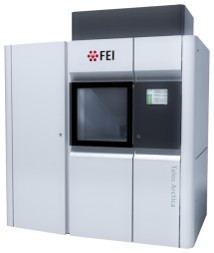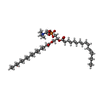+ Open data
Open data
- Basic information
Basic information
| Entry | Database: PDB / ID: 9.0E+41 | ||||||
|---|---|---|---|---|---|---|---|
| Title | Asymmetric unit of yPOWV | ||||||
 Components Components |
| ||||||
 Keywords Keywords | VIRAL PROTEIN | ||||||
| Function / homology |  Function and homology information Function and homology informationribonucleoside triphosphate phosphatase activity / viral capsid / double-stranded RNA binding / methyltransferase cap1 activity / mRNA 5'-cap (guanine-N7-)-methyltransferase activity / RNA helicase activity / protein dimerization activity / host cell endoplasmic reticulum membrane / symbiont-mediated suppression of host innate immune response / symbiont entry into host cell ...ribonucleoside triphosphate phosphatase activity / viral capsid / double-stranded RNA binding / methyltransferase cap1 activity / mRNA 5'-cap (guanine-N7-)-methyltransferase activity / RNA helicase activity / protein dimerization activity / host cell endoplasmic reticulum membrane / symbiont-mediated suppression of host innate immune response / symbiont entry into host cell / serine-type endopeptidase activity / viral RNA genome replication / RNA-directed RNA polymerase activity / fusion of virus membrane with host endosome membrane / virion attachment to host cell / host cell nucleus / virion membrane / structural molecule activity / proteolysis / extracellular region / ATP binding / metal ion binding / membrane Similarity search - Function | ||||||
| Biological species |  Deer tick virus Deer tick virus | ||||||
| Method | ELECTRON MICROSCOPY / single particle reconstruction / cryo EM / Resolution: 2.83 Å | ||||||
 Authors Authors | Das, S. / Hafenstein, S. | ||||||
| Funding support | 1items
| ||||||
 Citation Citation |  Journal: Sci Adv / Year: 2025 Journal: Sci Adv / Year: 2025Title: Atomic-resolution structure of a chimeric Powassan tick-borne flavivirus. Authors: Sayan Das / Anoop Narayanan / Anqi Wang / Ibrahim M Moustafa / Sung Hyun Cho / Dana Mitzel / Joyce Jose / Susan L Hafenstein /  Abstract: Powassan virus (POWV) is an emerging tick-borne flavivirus for which no vaccine or antiviral treatment exists. The incidence of human infections of POWV in North America has been increasing because ...Powassan virus (POWV) is an emerging tick-borne flavivirus for which no vaccine or antiviral treatment exists. The incidence of human infections of POWV in North America has been increasing because of the expanding distribution of the tick vector that transmits POWV to humans. To mitigate the dangers of handling a risk group 3 human pathogen, a chimeric virus was constructed from the genetic backbone of a yellow fever virus vaccine strain 17D (YFV-17D) and the external structural proteins of POWV lineage II. The chimera had a comparable phenotype as POWV. The atomic resolution of yellow fever virus-Powassan virus chimera (yPOWV) structure was built without ambiguity, revealing surface glycans and lipid pocket factors. The similarity to other flavivirus structures and the phenotype similar to YFV-17D suggest that there could be future potential as a vaccine candidate. | ||||||
| History |
|
- Structure visualization
Structure visualization
| Structure viewer | Molecule:  Molmil Molmil Jmol/JSmol Jmol/JSmol |
|---|
- Downloads & links
Downloads & links
- Download
Download
| PDBx/mmCIF format |  9e41.cif.gz 9e41.cif.gz | 619.2 KB | Display |  PDBx/mmCIF format PDBx/mmCIF format |
|---|---|---|---|---|
| PDB format |  pdb9e41.ent.gz pdb9e41.ent.gz | 521.8 KB | Display |  PDB format PDB format |
| PDBx/mmJSON format |  9e41.json.gz 9e41.json.gz | Tree view |  PDBx/mmJSON format PDBx/mmJSON format | |
| Others |  Other downloads Other downloads |
-Validation report
| Summary document |  9e41_validation.pdf.gz 9e41_validation.pdf.gz | 1.5 MB | Display |  wwPDB validaton report wwPDB validaton report |
|---|---|---|---|---|
| Full document |  9e41_full_validation.pdf.gz 9e41_full_validation.pdf.gz | 1.5 MB | Display | |
| Data in XML |  9e41_validation.xml.gz 9e41_validation.xml.gz | 60.9 KB | Display | |
| Data in CIF |  9e41_validation.cif.gz 9e41_validation.cif.gz | 91.9 KB | Display | |
| Arichive directory |  https://data.pdbj.org/pub/pdb/validation_reports/e4/9e41 https://data.pdbj.org/pub/pdb/validation_reports/e4/9e41 ftp://data.pdbj.org/pub/pdb/validation_reports/e4/9e41 ftp://data.pdbj.org/pub/pdb/validation_reports/e4/9e41 | HTTPS FTP |
-Related structure data
| Related structure data |  47497MC M: map data used to model this data C: citing same article ( |
|---|---|
| Similar structure data | Similarity search - Function & homology  F&H Search F&H Search |
- Links
Links
- Assembly
Assembly
| Deposited unit | 
|
|---|---|
| 1 |
|
- Components
Components
| #1: Protein | Mass: 53913.516 Da / Num. of mol.: 3 Source method: isolated from a genetically manipulated source Source: (gene. exp.)  Deer tick virus / Production host: Deer tick virus / Production host:  Homo sapiens (human) / References: UniProt: Q8VBK7 Homo sapiens (human) / References: UniProt: Q8VBK7#2: Protein | Mass: 8418.004 Da / Num. of mol.: 3 Source method: isolated from a genetically manipulated source Source: (gene. exp.)  Deer tick virus / Production host: Deer tick virus / Production host:  Homo sapiens (human) / References: UniProt: Q8VBK7 Homo sapiens (human) / References: UniProt: Q8VBK7#3: Polysaccharide | alpha-D-mannopyranose-(1-3)-beta-D-mannopyranose-(1-4)-2-acetamido-2-deoxy-beta-D-glucopyranose-(1- ...alpha-D-mannopyranose-(1-3)-beta-D-mannopyranose-(1-4)-2-acetamido-2-deoxy-beta-D-glucopyranose-(1-4)-2-acetamido-2-deoxy-beta-D-glucopyranose | Source method: isolated from a genetically manipulated source #4: Polysaccharide | Source method: isolated from a genetically manipulated source #5: Chemical | ChemComp-CPL / Has ligand of interest | Y | Has protein modification | Y | |
|---|
-Experimental details
-Experiment
| Experiment | Method: ELECTRON MICROSCOPY |
|---|---|
| EM experiment | Aggregation state: PARTICLE / 3D reconstruction method: single particle reconstruction |
- Sample preparation
Sample preparation
| Component | Name: Powassan virus / Type: VIRUS / Entity ID: #1-#2 / Source: RECOMBINANT |
|---|---|
| Source (natural) | Organism:  Powassan virus Powassan virus |
| Source (recombinant) | Organism:  Homo sapiens (human) Homo sapiens (human) |
| Details of virus | Empty: NO / Enveloped: YES / Isolate: STRAIN / Type: VIRION |
| Buffer solution | pH: 8 |
| Specimen | Embedding applied: NO / Shadowing applied: NO / Staining applied: NO / Vitrification applied: YES |
| Vitrification | Cryogen name: ETHANE |
- Electron microscopy imaging
Electron microscopy imaging
| Experimental equipment |  Model: Talos Arctica / Image courtesy: FEI Company |
|---|---|
| Microscopy | Model: FEI TALOS ARCTICA |
| Electron gun | Electron source:  FIELD EMISSION GUN / Accelerating voltage: 200 kV / Illumination mode: FLOOD BEAM FIELD EMISSION GUN / Accelerating voltage: 200 kV / Illumination mode: FLOOD BEAM |
| Electron lens | Mode: BRIGHT FIELD / Nominal defocus max: 2000 nm / Nominal defocus min: 500 nm |
| Image recording | Electron dose: 40 e/Å2 / Film or detector model: FEI FALCON IV (4k x 4k) |
- Processing
Processing
| EM software | Name: PHENIX / Category: model refinement | ||||||||||||||||||||||||
|---|---|---|---|---|---|---|---|---|---|---|---|---|---|---|---|---|---|---|---|---|---|---|---|---|---|
| CTF correction | Type: PHASE FLIPPING AND AMPLITUDE CORRECTION | ||||||||||||||||||||||||
| 3D reconstruction | Resolution: 2.83 Å / Resolution method: FSC 0.143 CUT-OFF / Num. of particles: 2177061 / Symmetry type: POINT | ||||||||||||||||||||||||
| Refine LS restraints |
|
 Movie
Movie Controller
Controller




 PDBj
PDBj



